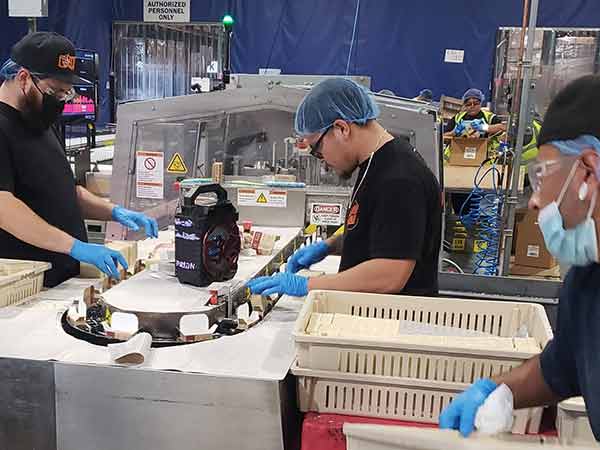What you should know about taking advantage of tax credits and economic incentives.

Every year in the United States the local, state, and federal government allocate over $100B in incentives for businesses. This figure does not even include any of the one-time Covid-related programs like Paycheck Protection Program (PPP) and Economic Injury Disaster Loan (EIDL)! Unfortunately, most of this money either goes unclaimed or goes to large corporations that can afford to have teams of tax attorneys and consultants on staff looking for these opportunities and submitting applications. In fact, we estimate that 97% of these program dollars go to big businesses (over 500 employees based on the SBA’s definition).
Covid has shown how important it is that we know how to actually build things in America, from PPE to vaccines, and everything in between. The war in Ukraine, lockdowns in China, and dramatic swings in the price of shipping, fuel, and basic commodities underscores the strategic importance of a healthy manufacturing ecosystem here in the US.
Incentives typically take the form of tax credits/deductions, grants, or low-interest loans. These individual incentive programs are either legislated or discretionary. Legislated incentives, like the Research & Development Tax Credit (R&D) or the Employee Retention Tax Credit (ERTC) are ones that as long as you check the boxes, you qualify. Discretionary programs typically require an application to a government body and involve committee or an elected official’s approval. These are not guaranteed, even if you check all the boxes. Examples of these are many grant programs or the California Competes Tax Credit in California.
Running a manufacturing business is challenging, even in the best of times. For growing manufacturers, economic incentives and tax credits are an often underutilized or forgotten element of an operational growth plan. The triggers for these incentives involve hiring, equipment purchasing, and investment in real estate or tangible assets. There is a nice cascading effect when real growth and productivity is occurring where we’ve seen sophisticated manufacturers layer incentives on top of one another that fuel a virtuous cycle. Buying or leasing a new facility to house new equipment and additional lines which requires hiring to staff and maintain. Each of these actions has potential incentives that can be applied for and secured.
Let’s look at a specific example. Founded in 2013, Dr. Squatch employs nearly 300 individuals at their California locations of Rancho Dominguez and Marina Del Rey. As a community-oriented producer of natural personal care products, the company has donated nearly 2.3 million bars of soap through its partnerships with different organizations. In April 2022 the company was awarded a $10M tax credit through the California Competes program which will allow them to remain competitive and grow in the state. Over the coming years they will be expanding to an additional massive facility, hiring hundreds of employees, and investing in equipment and tangible assets. All of these actions have potential associated incentives that are worth exploring.
We will leave you with three concrete actions and three insider tips.
1. Review the top federal programs and discuss with your CPA or finance team to ensure you are taking advantage of them.
a. R&D Tax Credit, keep in mind the changes that 2022 brings to this program
b. Work Opportunity Tax Credit, might be a great way to source, attract, and retain underutilized talent
c. New Employment Credit, allows companies to claim tax credits for hiring people formerly on unemployment, formerly incarcerated, formerly on AFDC or veterans.
2. Search for “your State + Economic Development” and “your town + Economic Development” (i.e. “Kansas Economic Development” or “Raleigh NC Economic Development) for State and local level lists of incentives and economic development organizations to contact for more information or assistance.
3. Most State Governors have newsletters to subscribe to for business leaders with new programs and updates when funds have been replenished or become available.
And three insider tips:
About Subcity:
Subcity, founded in 2021, is a free online platform that delivers personalized results for manufacturers to identify and secure millions of dollars in tax credits and incentives available to small businesses.
Subcity raised a $3M seed round led by Homebrew with participation from BoxGroup, Slauson & Co, V1VC, The Fund, IA Ventures; current and former executives from top FinTech companies like Stripe, Plaid, and Intuit and many more relevant angels and institutions.
By leveraging its founders’ years of expertise in government, SaaS, and big data, the innovative platform makes it easy to identify and apply for financial incentives using a combination of human expertise with algorithmic automation.
Subcity’s mission is to democratize access to capital and tax credits for America’s small manufacturers. For more information about Subcity, and to see what government incentives might be available to your company, please visit: www.subcity.com

About Gil Gonzales:
Gil Gonzales is the president and co-founder of Subcity. He formerly served as a Senior Economic Development and Public Affairs professional with a 15-year track record in various strategic capacities within state and local government. He has notable experience leading economic development initiatives, legislative advocacy and public affairs while designing and executing strategic plans for effective government outreach and policy at the municipal and state levels. Gil’s roles include bipartisan economic and business policy implementation that drove millions of dollars in state funding, tens of thousands of new jobs created, and billions of dollars in regional capital investment among a series of community development programs throughout the Western United States.
Scott Ellyson, CEO of East West Manufacturing, brings decades of global manufacturing and supply chain leadership to the conversation. In this episode, he shares practical insights on scaling operations, navigating complexity, and building resilient manufacturing networks in an increasingly connected world.